Auto
-
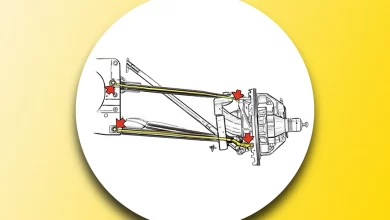
How Do Wheel Tethers Work?
In the fast-paced world of motorsports, safety takes precedence alongside speed. Wheel tethers, often unsung heroes of racing, play a pivotal role in ensuring the well-being of drivers and spectators. These unassuming devices are engineered to withstand the extreme forces generated during high-speed crashes, preventing the potentially catastrophic detachment of a race car's wheels. Comprising high-strength materials like Kevlar and carbon fiber, wheel tethers engage with precision, distributing forces and absorbing energy upon impact. Whether it's Formula 1, IndyCar, or other racing disciplines, understanding how wheel tethers work is paramount to appreciating the relentless commitment to safety in motorsports. So, let's delve into the intricacies of this critical safety component, uncovering the technology that keeps wheels securely attached to the chassis and exploring the innovations that promise an even safer future for racing enthusiasts worldwide.
-
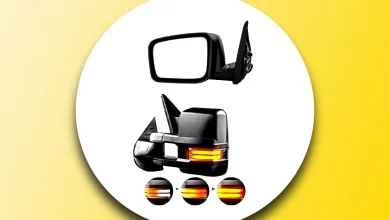
How do heated mirrors work?
Heated mirrors, a subtle yet ingenious addition to modern vehicles, hold the key to safer driving in adverse weather conditions. But how do heated mirrors work their magic, ensuring that your view remains unobstructed when faced with frost, ice, or fog? These unassuming mirrors employ a blend of technology and science, with electrical heating elements at their core. When activated, heated mirrors channel a controlled electrical current through these elements, inducing them to emit a gentle, imperceptible heat. This carefully regulated warmth quickly combats any frost or condensation that dares to form on the mirror's surface. As a result, you're left with a clear and unobstructed view, crucial for safe driving. One of the remarkable aspects of heated mirrors is their energy efficiency. Drawing only a minimal amount of power, they are unlikely to strain your vehicle's electrical system or significantly affect fuel consumption. So, whether you're navigating icy winter mornings or rainy summer days, heated mirrors stand as your reliable ally, ensuring that visibility is never compromised. In this article, we'll delve deeper into the intricate workings of heated mirrors, from their installation and benefits to troubleshooting tips and the future of this essential automotive feature.
-
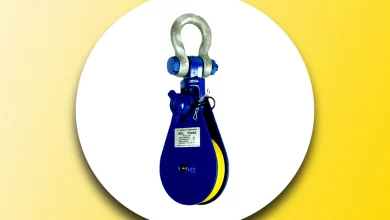
How do snatch blocks work?
Snatch blocks, often regarded as unsung heroes in rigging and hoisting operations, play a pivotal role in the world of heavy lifting and pulling. These unassuming mechanical devices are designed to change the direction of force and enhance mechanical advantage, making it easier to handle heavy loads with precision and efficiency. At their core, snatch blocks consist of a grooved wheel, known as a sheave, mounted within a sturdy frame. The sheave guides ropes, cables, or chains while minimizing friction, allowing for smooth and controlled movement. This ingenious mechanism works by altering the path of the rope or cable, ensuring that tension is maintained throughout the operation. One of the primary benefits of snatch blocks is their ability to provide mechanical advantage. A single snatch block can offer a 2:1 mechanical advantage, meaning you can lift a load twice as heavy with the same amount of force. For heavier tasks, double snatch blocks come into play, providing an impressive 4:1 mechanical advantage. This increase in mechanical advantage empowers operators to tackle substantial loads while minimizing physical exertion. Intricately woven into industries such as construction, forestry, maritime, and rescue operations, snatch blocks are essential tools for redirecting force, changing load directions,…
-
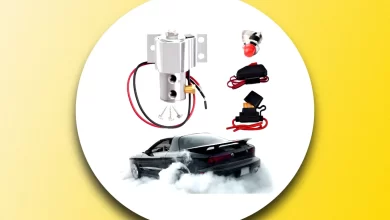
How do line locks work?
In the world of outdoor adventures and do-it-yourself projects, the functionality of line locks is a topic of significance. Line locks, also known as rope grips or tensioners, are simple yet ingenious devices that serve as the linchpin for maintaining tension in ropes or cords. Whether you're a seasoned camper, an avid hiker, a fishing enthusiast, or someone engrossed in creative DIY projects, understanding how line locks work can significantly enhance your skill set and the efficiency of your endeavors. At the core of line locks lies a fundamental principle: friction. These unassuming tools consist of key components, including a body, a cam mechanism, and, in some models, a tensioning mechanism. When you pull a rope or cord through a line lock, the cam mechanism comes into play, gripping the line tightly against the inner surface of the body. This action generates friction, holding the line securely in place. The result? A hassle-free and reliable way to keep your lines taut without the need for constant manual adjustments. Line locks come in various types, each tailored to specific applications. Some are built to handle heavy loads, making them ideal for securing large tents or anchoring gear, while others are lightweight…
-

How Do Wheel Spacers Work?
Wheel spacers, often underestimated yet profoundly impactful, are a hidden gem in the realm of automotive customization. These unassuming components play a pivotal role in enhancing your vehicle's performance, stability, and visual appeal. But how do wheel spacers work their magic? At their core, wheel spacers are precision-engineered discs or blocks that create space between your vehicle's wheel and its hub assembly. This seemingly minor adjustment, altering the offset and widening the track width, has a ripple effect on your driving experience. Handling becomes more responsive, stability is heightened, and the aesthetics of your vehicle take on a sportier and more aggressive stance. Wheel spacers offer not only a visual transformation but also practical advantages that can greatly impact your driving dynamics. Installation of wheel spacers can be a DIY project for those with mechanical aptitude, but it's imperative to adhere to the manufacturer's guidelines and torque specifications. These components can be constructed from high-quality materials like aluminum or steel, ensuring durability and longevity. Furthermore, wheel spacers grant the added benefit of creating clearance for larger brake and suspension components, accommodating upgrades that can further elevate your vehicle's performance. In conclusion, understanding how wheel spacers work is the first step…
-
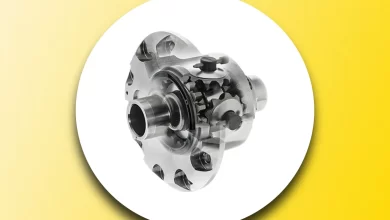
How Do Air Lockers Work?
Off-roading enthusiasts often seek to conquer challenging terrains, and to do so, they rely on a range of specialized equipment and vehicle modifications. Among these, air lockers stand out as ingenious components that play a pivotal role in enhancing traction and control during off-road adventures. How do air lockers work? At the core of their functionality lies a pneumatic system, a critical feature that distinguishes them from standard differentials. Unlike open differentials, which distribute power to the wheel with the least resistance, air lockers provide drivers with the ability to selectively engage or disengage the differential, effectively "locking" both wheels on the same axle. This ensures that both wheels rotate at the same speed, thereby maximizing traction and preventing wheel spin – a common issue in challenging terrains. The magic of air lockers happens when drivers encounter demanding landscapes such as rocky trails, muddy paths, or sandy dunes. In these scenarios, engagement of the air locker transforms the vehicle's performance. By locking both wheels together, they work in unison, delivering improved grip and control. This selective engagement feature offers versatility, allowing drivers to switch between locked and unlocked modes, making air lockers an invaluable asset for navigating diverse off-road conditions.
-
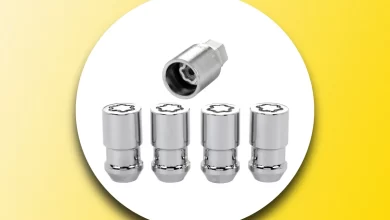
How Do Wheel Locks Work?
In the world of automotive security, one often encounters an inconspicuous yet powerful guardian known as the wheel lock. These unassuming devices, also referred to as wheel clamps or tire locks, play a pivotal role in deterring vehicle theft and safeguarding your valuable investment. But how exactly do wheel locks work? At their core, wheel locks are ingeniously designed security mechanisms aimed at immobilizing a vehicle by preventing the rotation of one or more of its wheels. This is achieved through the application of a sturdy metal clamp that wraps securely around the tire. The clamp, typically constructed from tamper-resistant materials like hardened steel, forms an unyielding barrier, rendering the wheel motionless. It's this immobilization that stands as the primary defense against theft. The operation of a wheel lock is a straightforward yet highly effective process. To secure your vehicle, you position the clamp around the tire you wish to protect, ensuring a snug fit that leaves no room for wheel movement. Once in place, a unique key is inserted into the lock's mechanism and turned, securing the clamp in its closed position. This act of locking the wheel inhibits any rotation, making it exceedingly difficult for a potential thief…
-
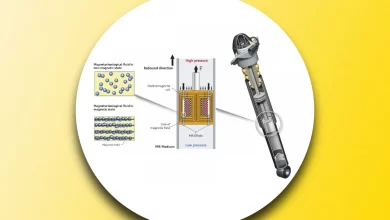
How Do Magnetic Ride Systems Work?
Magnetic ride systems, often referred to as magnetorheological (MR) suspensions, are a pinnacle of modern automotive engineering. They embody the seamless fusion of cutting-edge technology and a quest for the perfect ride. At their core, magnetic ride systems transform the way your vehicle's suspension operates, delivering a level of adaptability and performance that was once the stuff of science fiction. These systems rely on a remarkable substance known as magnetorheological fluid—a smart fluid that changes its viscosity in response to magnetic fields. This fluid resides within the dampers of the suspension system. When sensors detect changes in the road surface, vehicle speed, or your steering input, the system's controller swiftly responds by altering the electromagnetic field within the dampers. This, in turn, affects the viscosity of the magnetorheological fluid, allowing the suspension to instantaneously adjust the damping forces at each wheel. The result is a driving experience like no other. Whether you're navigating a pothole-ridden city street or taking a spirited drive on winding roads, magnetic ride systems ensure that your vehicle's suspension is always optimized for comfort and performance. In our exploration of magnetic ride systems, we'll delve deeper into the science, benefits, and real-world applications of these groundbreaking…
-
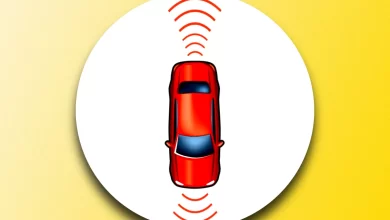
How do reversing sensors work?
Reversing sensors, often referred to as parking sensors or proximity sensors, are unsung heroes in modern vehicles, silently working to enhance safety and convenience. But have you ever wondered how these small, unassuming devices manage to detect obstacles and prevent collisions while you're navigating tight parking spots or reversing out of driveways? In this article, we unveil the intricate technology behind reversing sensors, shedding light on the wizardry that makes them an indispensable part of today's automobiles. Reversing sensors rely on two primary technologies: ultrasonic and electromagnetic. Ultrasonic sensors emit high-frequency sound waves beyond the range of human hearing, and when these waves bounce off obstacles and return, the sensors calculate the distance to those obstacles. Electromagnetic sensors, on the other hand, generate magnetic fields and detect disruptions caused by nearby objects, providing yet another method for obstacle detection. But it doesn't end there; the evolution of reversing sensors continues, with advancements like advanced object recognition, 360-degree coverage, and integration with autonomous driving on the horizon. Understanding how reversing sensors work not only deepens our appreciation for the safety they bring to our daily drives but also highlights the ongoing innovation in automotive technology. So, join us as we delve…
-

How do car sensors work?
Car sensors are the unsung heroes of modern automotive technology, working silently and diligently to ensure your vehicle operates at peak performance while prioritizing safety and efficiency. These sophisticated sensors are strategically placed throughout your car, each with a specific function, and they communicate with the vehicle's central brain, the Engine Control Module (ECM), to make real-time adjustments based on the data they collect. One of the most well-known car sensors is the oxygen sensor (O2 sensor), which monitors the levels of oxygen in the exhaust gases. By doing so, it helps optimize the air-fuel mixture, ensuring efficient combustion and reducing harmful emissions. Throttle position sensors (TPS) track the angle of the throttle plate, allowing the ECM to adjust fuel injection and ignition timing for smooth acceleration and responsive engine performance. Mass airflow sensors (MAF) play a critical role in measuring the volume and density of incoming air, aiding in the calculation of the ideal air-fuel mixture. Coolant temperature sensors (CTS) monitor engine temperature, assisting the ECM in adjusting parameters and controlling cooling systems. Knock sensors detect engine knock or detonation and enable the ECM to protect the engine by adjusting ignition timing. Airbag sensors, on the other hand, are…
- 1
- 2